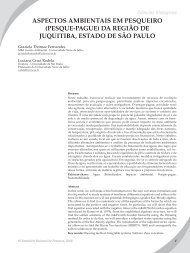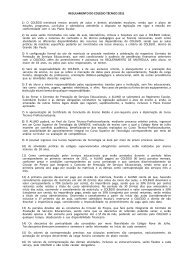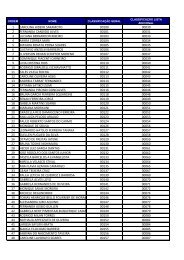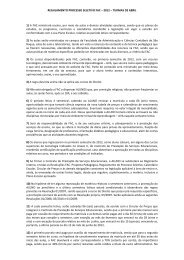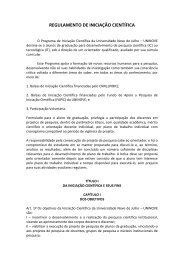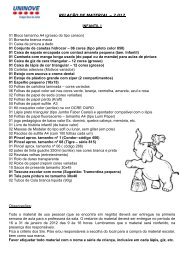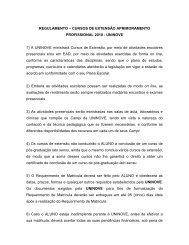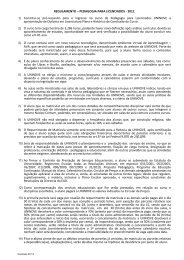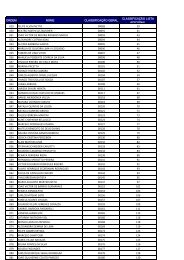Dannylo Wesley Nóbrega de Sousa - Uninove
Dannylo Wesley Nóbrega de Sousa - Uninove
Dannylo Wesley Nóbrega de Sousa - Uninove
Create successful ePaper yourself
Turn your PDF publications into a flip-book with our unique Google optimized e-Paper software.
adipose tissue) in CS are still to be un<strong>de</strong>rstand. Kinins are generated in the circulation and<br />
tissues by enzymatic hydrolysis of its precursor pepti<strong>de</strong>, the kininogen by the action of<br />
kallikrein. The hydrolysis of kininogen leads to the formation of bradykinin, the main<br />
effector of the kallikrein-kinin system (Figure 1). This pepti<strong>de</strong> has high affinity for the B2<br />
receptor and from this interaction, <strong>de</strong>rives the majority of the cardiovascular effects of<br />
kinins, including control of blood pressure and vasodilation 13 . Bradykinin is also subject to<br />
enzymatic digestion by carboxipeptida<strong>de</strong>s, being the product of this reaction - <strong>de</strong>s-Arg9-BK<br />
- hol<strong>de</strong>r of high affinity for the kinin B1 receptor. This receptor is involved in inflammatory<br />
and pain states 14 . The receptors B1 and B2 kinin receptors are transmembrane G protein-<br />
coupled, however, have their own characteristics. While the B2 receptor is constitutively<br />
expressed and ubiquitous distribution, the B1 receptor is poorly expressed and increased<br />
expression occurs preferred in pathological conditions.<br />
(Figure 1)<br />
To our knowledge, there are few studies on the gene expression of components of the<br />
kallikrein-kinin system in CS. Moreover, there is increasing interest in the mechanisms<br />
involved in the preference of visceral fat <strong>de</strong>position, as occurs in the CS, Metabolic<br />
Syndrome (MS) and <strong>de</strong>ficiency states of Growth Hormone (GH). The quantification of<br />
kinin B1 and B2 receptors mRNA expression in visceral and subcutaneous adipose tissues<br />
in the CS could contribute to better un<strong>de</strong>rstanding their distribution in human adipose tissue<br />
and the modulation of this system in hypercortisolism state. The main objective of this<br />
study was to i<strong>de</strong>ntify levels of kinin B1 and B2 receptors mRNA expression in<br />
subcutaneous (SAT) and visceral (VAT) adipose tissues of endogenous Cushing’s<br />
syndrome patients, adjusted for body mass in<strong>de</strong>x and age.<br />
Method<br />
Subjects/Procedures<br />
This preliminary study, previously approved by the local Ethics Committee, was composed<br />
of adipose tissue collected of five (05) patients with endogenous hypercortisolism<br />
un<strong>de</strong>rgoing elective abdominal surgery, adjusted for age, sex and BMI. Sample tissues were<br />
26







